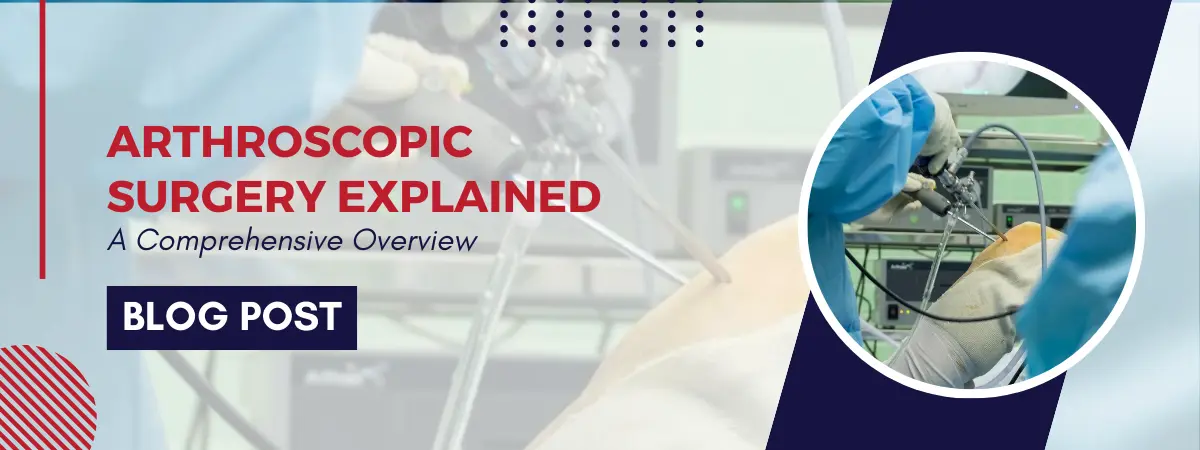Working Time
| Sunday - Friday | 07:00 AM - 11:00 PM |
| Saturday | Closed |
| Other Time | On Appointment |
Book Appointment

Introduction to Arthroscopic Surgery
Arthroscopic surgery, also known as arthroscopy, is a minimally invasive procedure utilized by orthopedic surgeons to diagnose, monitor, treat, or repair joint injuries or diseases. This innovative technique involves making small incisions and employing specialized instruments and cameras to visualize images of the joint.
Understanding the Benefits of Arthroscopy
Orthopedic specialists favor arthroscopy due to its less invasive nature and shorter rehabilitation period compared to traditional open surgery. The procedure provides a detailed view of the joint without the need for extensive incisions, resulting in reduced post-operative pain and faster recovery times for patients.
Dr. Srikanth Varma: A Leading Orthopedic Expert in Al Nahda, Dubai
Dr. Srikanth Varma, a distinguished Orthopedic Surgeon in Al Nahda, Dubai, boasts extensive qualifications including MBBS, MS (Orthopedics), FNB, FIAS, and FIAP. With a focus on Trauma, Hand, and Wrist surgeries, Dr. Varma is renowned for his expertise in Reconstructive Microsurgery, Peripheral Nerve Surgery, and Tendon Repairs and Transfers.
Common Applications of Arthroscopic Surgery
Arthroscopy is employed in various scenarios, including:
Diagnosis of joint diseases or injuries.
Removal of damaged or inflamed tissues, loose bone, or cartilage.
Repair and reconstruction of torn tendons or ligaments.
Key Joints Treated with Arthroscopy
The most commonly treated joints with arthroscopy include the knee, shoulder, elbow, ankle, hip, and wrist. Typical procedures include ACL or PCL reconstruction in the knee, rotator cuff surgery in the shoulder, and carpal tunnel release in the wrist.
The Arthroscopic Surgery Process
Arthroscopic surgery is usually done as an outpatient procedure at a surgical center. Patients may receive local or general anesthesia. The surgeon uses a small incision near the affected joint to insert an arthroscope for visualization. Specialized instruments may be used for specific procedures like tissue repair.
Recovery and Rehabilitation
Following surgery, patients receive post-operative care instructions, including wound care and activity restrictions. Recovery times vary depending on the procedure's complexity and the joint involved. Physical therapy or sports medicine may be recommended to aid in rehabilitation and restore mobility.
Conclusion: Optimal Recovery with Arthroscopic Surgery
Dr. Srikanth Varma, the best opthopaedic surgeon emphasizes the importance of patience and adherence to post-operative instructions for optimal recovery outcomes. Despite the less invasive nature of arthroscopic surgery, proper healing requires time and diligence. Patients are encouraged to follow their surgeon's guidance for the best results.
Recent Posts
- Closed vs. Open Fractures: Distinguishing Trauma and Tailored Treatments
- Mastering the Keyboard: Proper Typing Techniques to Prevent Hand Fatigue and Injury
- Comprehensive Guide to Managing Back Pain: Expert Insights from Dr. Srikanth Varma
- Understanding the Impact of Obesity on Orthopaedic Health: Insights by Dr. Srikanth Varma
- Expert Care for Pediatric Fractures in children by Dr. Srikanth Varma Racherla
- Recognizing Importance: National Hand Surgery Day 2024

